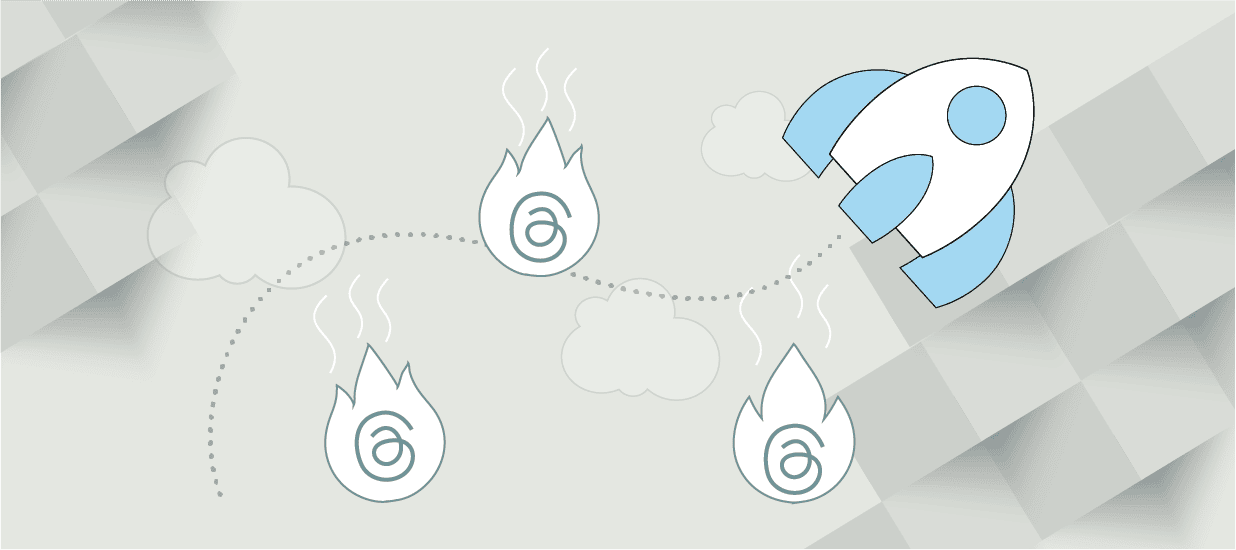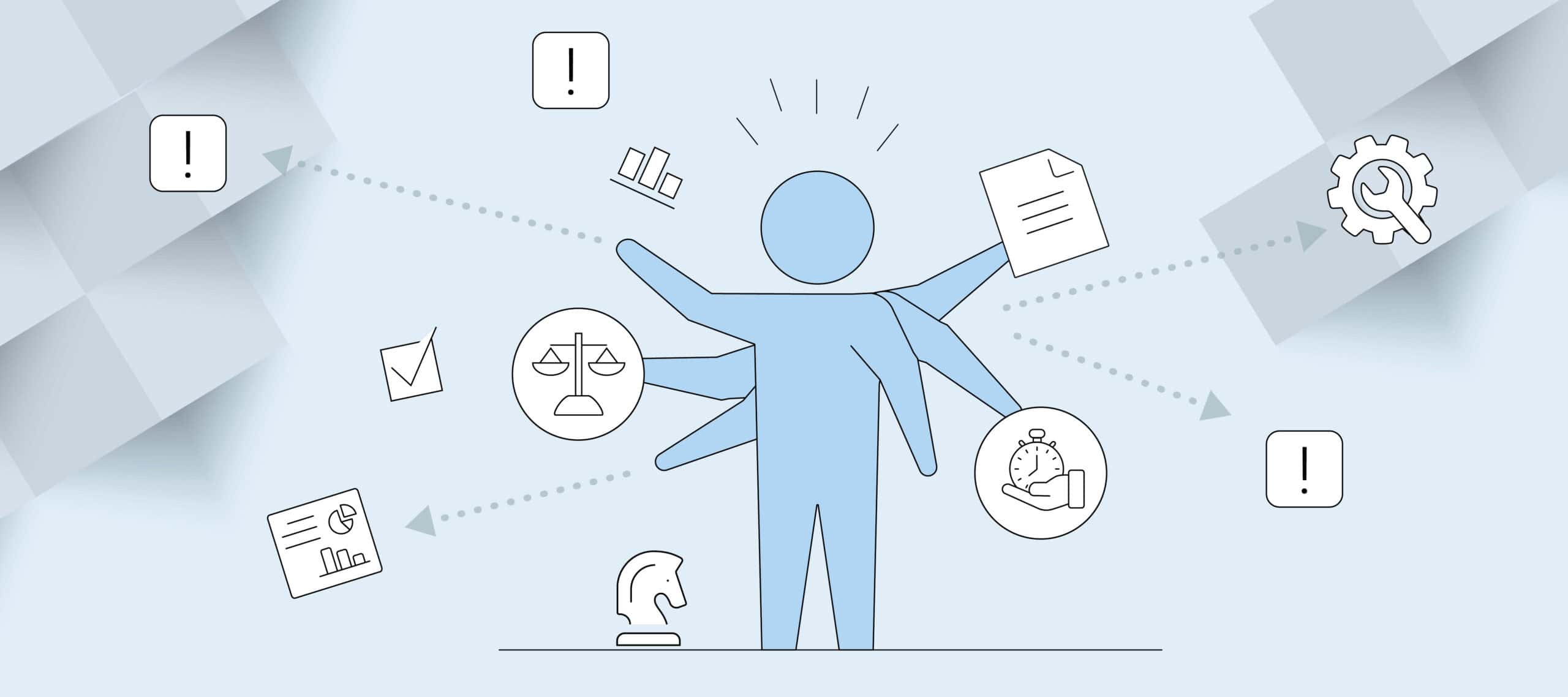No one sets out to create an angry customer, but there’s a good chance it will happen. Mismatched expectations are at the root of customer conflict. Perhaps a product doesn’t behave as expected or you over-promised and under-delivered on customer commitments. You may be tempted to believe a customer is difficult by nature, or see your company as poorly executing a well-established process. Most often the reality is that angry customers are the result of trade-offs organizations make. These might include shifting resources from one product to another, prioritizing enhancements for one customer segment over another, or judging when product quality is sufficient to release. At its core, product management is about leading an organization through intelligent trade-off decision-making. This means that eventually, product teams can expect to encounter an unhappy customer.
The situations in which you’ll encounter angry customers vary widely. Some we expect, such as when we investigate a recurring pattern of support cases that are escalated to, or perhaps discovered by, a product team. Then there are my favorites, the ones when we’re caught off guard:
- Conversations with customers related to a business case
- Interviews with customers about product requirements
- Feedback sessions on the product roadmap
- Research on user personas or use scenarios
- Evaluation of customer retention strategies
Learning how to handle these scenarios is a critical skill for product teams to develop because the risks in mishandling them are significant. There’s the potential of accidentally escalating the conflict or perpetuating misunderstandings, which could come back to haunt your organization at contract renewal. In social media conversations, or even during trade shows, an unresolved conflict can be amplified to dissuade new prospects from purchasing. Perhaps most important, though, is the missed opportunity for your product team to learn from the customer’s perspective and deepen the team’s relationship with key customer accounts. To many buyers, the way a vendor handles an escalated problem is just as important as how it delivers value.
The Harvard Negotiation Project (HNP) was founded in 1981 at Harvard Law School and is comprised of many of the world’s leading scholars of negotiation theory and practice. In their bestselling book Difficult Conversations—How to Discuss What Matters Most, HNP’s Douglas Stone, Bruce Patton and Sheila Heen present some best practices in handling difficult interpersonal conversations. I adapt them here to apply to customer conversations.
If you’re fortunate enough to anticipate a conversation with an unhappy customer, get as much context from internal sources beforehand as possible:
- How important is this customer to the business?
- Is this a reference account or a relatively large account?
- Is a renewal looming which the customer could leverage during the conversation?
- Does the customer have a history of frustration?
- Is the customer representative of a target segment or more of an outlier?
- Is the account manager free to participate?
Anticipated or not, if your customer conversation goes south, it’s important to be aware of the conversation’s two distinct phases: problem discovery and problem solving. Each requires dedicated time and different skills to achieve different ends. While this sounds obvious, many people’s natural inclination is to jump into problem solving too early in an effort to avoid or minimize conflict. This can leave customers feeling that they weren’t heard or that no one appreciated the issue’s impact. It can result in residual anger or unhappiness that lies in wait, exploding anew when a new incident occurs.
Problem Discovery
During problem discovery, your primary goal is to listen actively and explore impact. There’s a terrific technical note on active listening written by Professor James Clawson of Darden Business School at the University of Virginia. Most of the time when you listen you do so passively, Clawson explains. You pay attention to the other person without interacting. During active listening, you seek to hear the person on multiple levels, and reflect back what you hear to ensure that you understand correctly and that the customer “sees” this clearly. This helps other people feel heard and can serve as a powerful tool for communicating empathy and building trust in the process. Practice the following key skills to improve your active listening.
Suspend judgment. Momentarily set aside any judgments or beliefs about what may be right or wrong and simply listen to understand. This may be difficult, particularly if you mistakenly believe that others will interpret your failure to take an immediate position as implicitly taking responsibility to do what the customer wants. At this point, you’re still exploring the issue and its impact on the customer.
Focus on emotion, as well as content. The natural inclination with customers is to ignore emotions during tense moments and focus on problem solving. Certainly, that seems easier than talking about feelings or emotions. However, unexpressed feelings can accumulate and burst without warning. They can inhibit a customer’s ability to listen when it’s your turn to speak and leave them with a sense of not having been heard. Emotions reflect the intensity of a person’s thoughts and experience, so acknowledge what you perceive while demonstrating empathy. Try using phrases like, “I hear how upset you are” or “I can understand why that would be confusing.”
Follow—don’t lead—the conversation. The goal during active listening is to give the customer complete freedom to pursue the issues and topics they choose. This helps the customer express all facets of each issue and begin to feel heard.
Reflect accurately what you hear. Test that you’ve understood correctly what the customer is saying, and show them that you heard, by asking questions and paraphrasing. For example: “Just so I understand, you’re saying that …” or “If I heard you correctly, the impact was …”
Active listening is a key technique to use during problem discovery, but it’s important to know what to listen for. As Stone, Patten and Heen point out, every difficult conversation really encapsulates three conversations:
- The “what happened?” conversation. First and foremost, listen to the customer’s perspective on the sequence of events that led to the issue. Map contributing causes by determining what led to the undesirable outcome both from the customer’s perspective and your company’s perspective. What was the impact on the customer organization? You may need to suspend active listening and ask some open-ended questions to find out.
- The feelings conversation. Listen carefully because it can be difficult to determine the customer’s emotional state. Anger and fear may be obvious, but ambivalence, confusion or a vague uneasiness can be more subtle. Use their expressed feelings as an internal measure of the issue’s intensity.
- The identity conversation. Listen for any personal concerns your customer contact has, especially ones that relate to their identity within their organization. These might include implied fears that you’ll abandon their organization. Are they concerned about how they will look to their colleagues, to senior management or to other stakeholders? Acknowledge this directly, and recognize any championing of your product they have demonstrated. For example: “I appreciate how much you’ve championed the rollout of our product during the last year, and I hear how this issue has put you in an awkward position with department heads.”
Once the customer has a chance to express concerns, and you understand the impact of the issue on their organization and on themselves personally, it’s time to switch to problem solving.
Problem Solving
During problem solving, your primary goal is to take the lead and advocate internally for the customer. For most product teams, this is a more natural phase than problem discovery because it leverages the same problem-solving skills that are used for requirements research. The difference is that customer communications must be more carefully managed. The following guidelines will help lead the customer through the problem-solving phase.
Acknowledge failures. During problem discovery, it was critical to suspend judgment to explore the customer’s experience. Now it’s time to bring it back. Acknowledge failures where they occurred, and present some visibility into your organization to explain how they occurred. Organizations grow and mature just like people, so paint a picture of your company’s stage of maturity. Being real and honest is an important step towards reestablishing a sense of trust with the customer.
Gather solution requirements. Research how to rectify the situation and the customer relationship. You can ask the customer directly, “What do you need to resolve this situation? Why?” Some requirements may be hard, such as restoring a broken product capability. Others may be softer, such as restoring a sense of trust.
Advocate internally and explore options. Create a cross-functional team and explore options that address the issue. Be a champion for the customer’s needs and communicate what you learned. This is where your findings from the three conversations (what happened, feelings and identity) are critical to bringing the team up to speed and creating a complete picture.
Present choices. Identify multiple options to offer to the customer. Focus on options that provide a trade-off decision. For example, perhaps the customer uncovered a major defect in your software product that is moderately impacting their organization, but there’s also a heavy customer cost (perhaps testing and validation) to upgrading to a new version. You might offer to trade-off the time to a fix with the work required to deploy it: either wait one month for a major release that will fix the issue, or upgrade now to a patch and then upgrade again to the major release in one month. Presenting a choice helps the customer regain a sense of control. And since they participated in choosing the solution, it maximizes the odds that they’ll buy into it.
Reset expectations. Be up-front about where you are in the process and what to expect. Provide visibility into how your organization makes decisions and how you are advocating internally on the customer’s behalf. If their expectations for a resolution won’t fly internally, explain this as early as possible. It will help buy more time to “see what I can do” if needed.
Balance bad news with good. If you must deliver bad news, get internal buy-in for a token of goodwill you can extend to the customer if the relationship warrants it. This might include providing a product or service for free, or extending a renewal date at no cost. A small gift can go a long way—send a fruit basket or chocolates to your customer contact along with a letter explaining remedial steps you’re taking to resolve the issue.
Over-communicate along the way. During problem solving, resolution and follow-up, communicate more regularly than normal to demonstrate you’re on top of the situation. A daily touchpoint (by phone or email) is a good goal for a pressing issue at a key customer site. If your customer contact has any concerns in the interim, encourage them to email or call you. Being available shows that you’re committed to a resolution and to restoring the customer relationship.
Problem discovery and problem solving are complementary phases of tackling difficult customer conversations. Problem discovery is about active listening and exploration, while problem solving is about taking action and advocating. Each situation may require different amounts of time spent in each phase. However, slowing down to give the customer an opportunity to feel heard (even if only briefly) before taking action will help you learn from your customers, strengthen your relationship and, perhaps counter-intuitively, address issues more quickly when they arise.
Author
-

Jonathan Levene, a Global Organization & Talent Development leader with 11 years of experience, has made significant contributions at Harvard Business School Executive Education and ClearSight Leadership. His impactful career extends to roles at Biogen and Dana-Farber Cancer Institute. Jonathan's expertise in fostering organizational and talent growth positions him as a valuable asset in driving excellence. For questions or inquiries, please contact [email protected].
View all posts







